Designing a Full Battened Catboat Sail
Over the years, we have built all types of small shoal draft boats here at Arey’s Pond Boat Yard, including designing and building powerboats. In the early 2000s, we designed and built four 18′ Daysailers. At the time, fully battened sails — especially full battens placed at the head of the sail — were becoming very popular among the performance one-design sloops.
A discussion could be had on the placement of a long batten at the head of a modern sail today. This is an effort to essentially replicate what a gaff does on a traditional rig. But, we will save that discussion for another time.
We found the fully battened style on our 18s was very efficient at holding the shape of the sail, and prevented wear and tear because it was not flogging around as much. More roach is also designed in the sail, which results in more sail area.
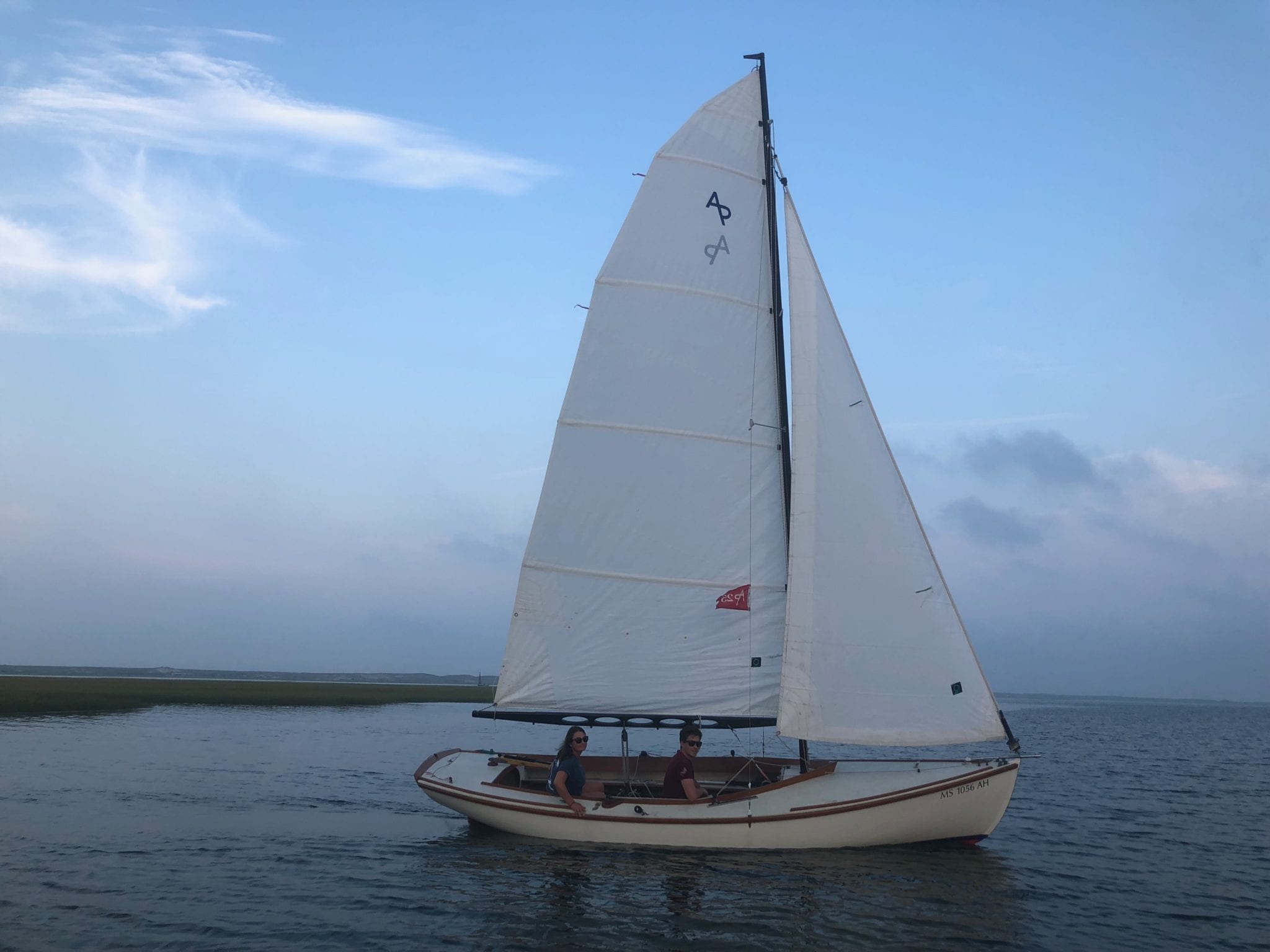 An extended roach on the sail is displayed in this Arey’s Pond Daysailer with a fully battened mainsail.
An extended roach on the sail is displayed in this Arey’s Pond Daysailer with a fully battened mainsail.
A May 2016 article by Quantum Sails provides a clear description of what a batten does:
“Acting as “I” beams, they resist the forces on the sail that try to compress the leech in towards the luff when the sail is sheeted in. This preserves the open leeched airfoil shape and keeps the sail from becoming fuller and more semicircular (rounded leech) as the breeze and the loads increase. A flatter airfoil shape with a straight, open leech keeps the boat upright and reduces weather helm. The more roach you need to support, the greater the compression, and the more important battens become.”
We have had such good luck with these fully battened mainsails on our daysailers that we were able to remove the adjustable backstay completely. The larger roach increased her downwind and upwind performance and lengthened the life of the sail.
When it came time to design a sail for the 22′ Cruising Catboat we were building for a gentleman who needed all systems to be handled as simply as possible, I decided it was time to look into a fully battened mainsail for catboats. I talked to sailmakers and no one in our area had experience except for Squeteaque Sailmakers in Bourne, Massachusetts. They were very helpful and I learned a lot from them and the owner of the catboat they made it for, including the fact that Nathaniel Herreshoff had a fully battened sail for his cat yawl “Clara” (pictured below).
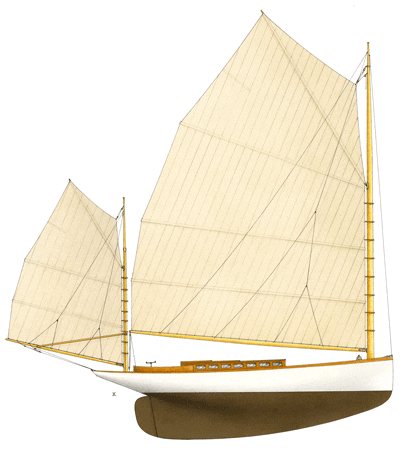 A drawing of Nat Herreshoff’s cat yawl ‘Clara’ with two fully battened sails.
A drawing of Nat Herreshoff’s cat yawl ‘Clara’ with two fully battened sails.
My goal was to make a sail that would be stiffer and easier to furl with the help of lazy jacks. The batten pockets would be installed where reef points would traditionally be, eliminating the need for reefing ties. It would be single line jiffy reefing from the cockpit for reef number one through three.
We gave the task of design and manufacturing to Steve Thurston and his crew at Thurston Quantum sails in Bristol, Rhode Island. Thurston Quantum did an exquisite job and the loading at the hoops that we were concerned about did not occur. As you see in the photo we did not end the batten pocket on a hoop.
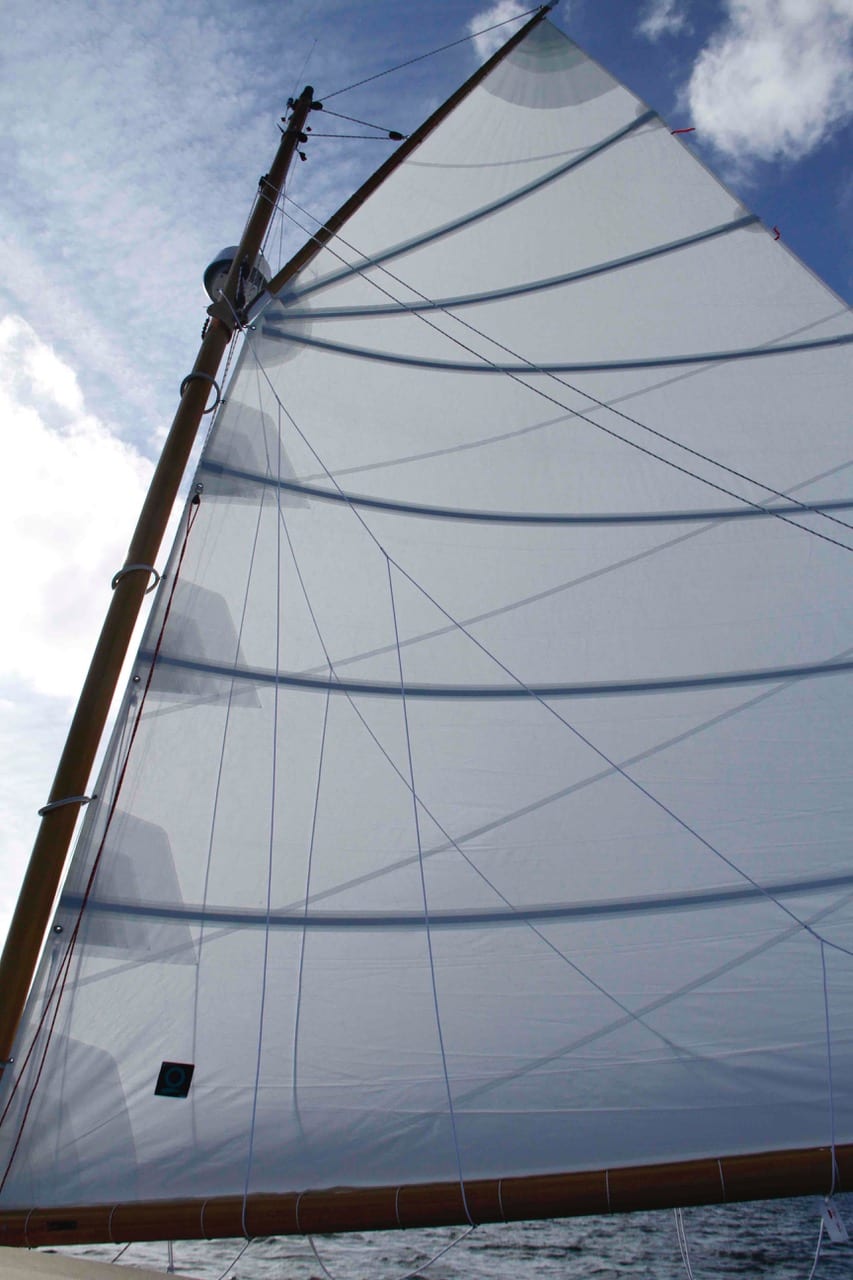 A fully battened mainsail on an Arey’s Pond catboat.
A fully battened mainsail on an Arey’s Pond catboat.
We tested it out and loaded up on a broad reach; wow did she power up! On the wind, the sail flattened out and we still had a nicely formed pocket and a smooth one-handed helm. Though we did make the tiller a little longer for more leverage, the weather helm was tough and the tiller needed block and tackle (on this boat we had tiller autohelm and for her intended use, it worked well). For daysailing, she would need a block and tackle added just to broad reach in 12 to 15 knots full sail. Our other concern was aesthetics. We concluded, although not a traditional catboat look, it was fine. “Not offended” was my reaction.
The reefing system worked well with the reef lines running inside the hollow boom. Although a busy mess of lines with a three reef system required a good sense of exactly what needed to be slack when, a hand with experience could raise the sail smoothly. The only negative, other than dealing with all the lines and getting used to how to be organized with the new system, was the weight. The lighter the battens the better, because with the weight of the gaff, battens and sail, we now had some hauling to do. In the case of our 22′ we had a two-speed winch, used to finish off the last 24″ of the throat hoist and tweak the peak — doing it all by hand you would need someone with solid arm strength.
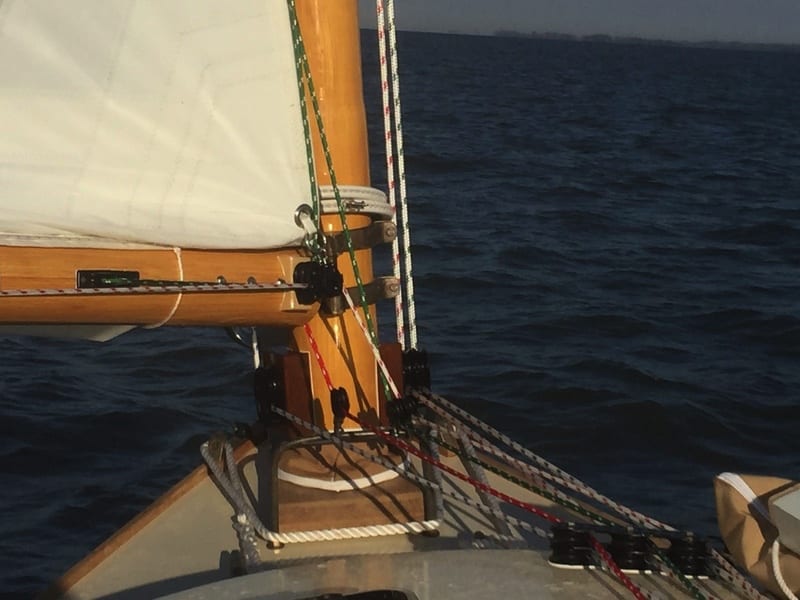 Halyard & reefing set up on a 22′ Arey’s Pond catboat with a fully battened mainsail.
Halyard & reefing set up on a 22′ Arey’s Pond catboat with a fully battened mainsail.
All in all, it’s clear the positives (more sail area, increased boat speed, ease of reefing, longer sail life, nearly self-furling) outweigh the negatives (heavier to hoist, intricate reefing system, aesthetics).
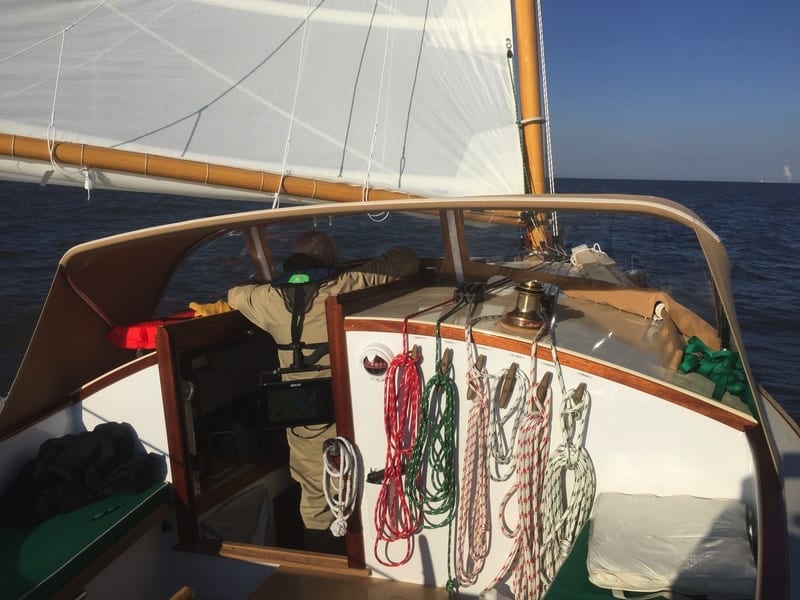 A reefed fully battened main sail on a 22′ Arey’s Pond catboat.
A reefed fully battened main sail on a 22′ Arey’s Pond catboat.
In 2019 we asked Thurston to replace a traditional sail on a Fenwick 18 catboat with a fully battened sail that we designed for the owner and builder Charlie Baldwin of Chatham. Charlie, who had built his Fenwick design in his backyard in the 1970s, had seen the sail on our 22′ during test sails before her trip south and was intrigued. I went for a sail with Charlie this fall and he showed off how pleased he was with the sail. He commented on how the boat speed had increased and handling felt like he had a new boat.
Many would say a new sail will feel like a new boat, but there was a difference in how well she went to windward compared to the traditional sail. This is in part because, as reported in one design sloops, the battens hold the shape of the head of the sail. Charlie also found reefing to be much easier, and anyone who has sailed a catboat will know the importance of an easy reefing system. Additionally, this sail for an 18′ catboat was easy to raise by hand, even with a solid wood gaff.
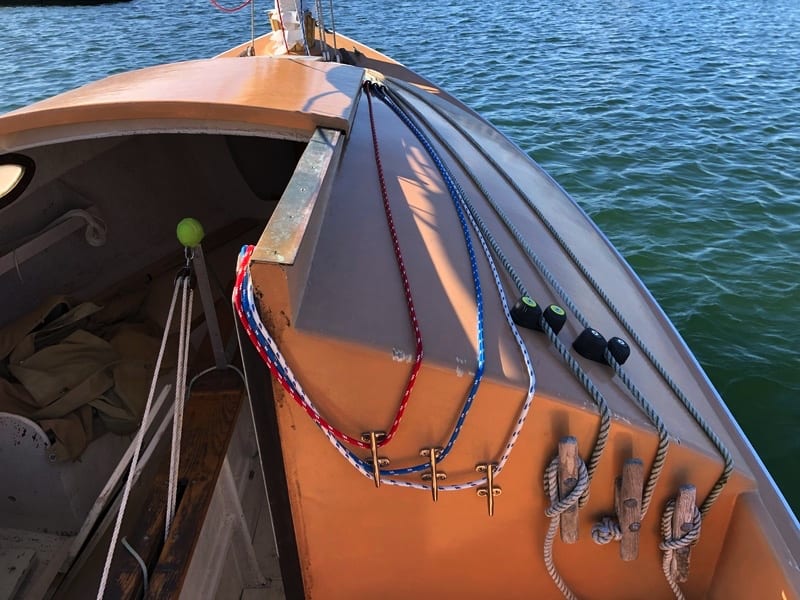 Halyard & reefing set up on Charlie’s 18′ catboat.
Halyard & reefing set up on Charlie’s 18′ catboat.
All in all, this experiment has had a very positive outcome. It has made me rethink the catboat sail and how I would design it based on the owner’s intended use.
 Charlie sailing his catboat with his new mainsail.
Charlie sailing his catboat with his new mainsail.
Please call us or visit us at the yard if you would like more information or a quote on a new sail.
Sail on!
-Tony
